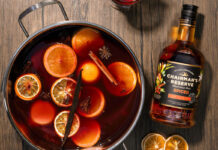Heritage and quality key to further growth for lager, firms say
DESPITE an influx of craft products, and the growth of beer styles such as IPA, lager continues to perform strongly in the on-trade.

Data from last year, provided by CGA, put lager’s value at £651 million in Scottish pubs, with lager sales accounting for 28% of all wet sales in 2016.
And there’s still considerable room for growth, say drinks firms.
Alan Mahon, co-founder of craft lager firm Brewgooder, which donates all its profits to clean-water initiatives, attributed lager’s continued success in Scotland’s pubs and bars to the fact that it remains “a very social beer style”.
“It ticks all the boxes people look for in a beer,” said Mahon.
“Crisp and refreshing, flavoursome and sessionable.”
Alan Hay of Tennent’s agreed, and said lager remained “an enduring favourite of Scottish drinkers”.
And while some beer drinkers have migrated to other styles in recent years, Liam Newton, vice president of marketing at Carlsberg UK, stressed that lager remains “a vital gateway” to the overall beer category.
Draught lager, in particular, “is still a prevalent choice for many consumers”, said Newton.
That being said, he also insisted that operators must meet customers’ increasing desire for choice.
Hannah Craig, marketing manager for Estrella Damm, part of Charles Wells portfolio, agreed.
She reckons while there’s ‘die-hards’ who continue to drink the same lager, “younger drinkers are not as loyal”.
“They’ll choose a beer based on their mood on any given day and will be driven by quality and flavour.”
Jessica Markowski, head of trade marketing at AB InBev UK & Ireland, said quality and premiumisation “is playing an increasingly important role for drinkers” across pubs and bars in Scotland.
“We’re also seeing a rise in premium sales at casual dining outlets, such as the burger-led eateries across the UK,” said Markowski.
When selecting new draught lagers to stock, Newton of Carlsberg said chief amongst the considerations should be heritage, quality and premiumisation.
He added that Carlsberg’s consumer research revealed these factors “are at the heart of decision making for today’s consumer”.
Taking a similar stance, Faith Holland of Diageo said customers “are interested in the stories, ingredients and provenance” behind the brands they choose to drink.
And operators need to be “brave and creative” to set themselves apart from local competition and “offer beers with a point of difference”, reckons Stephen Kofler of Krombacher UK.
However, in order to really keep customers happy, it’s vital licensees listen to their views, according to Newton of Carlsberg.
“Creating a relationship with customers by guiding them through the offering with expert knowledge is also essential, and goes hand-in-hand with listening to their thoughts to develop a tailored approach,” he said.
With customers increasingly seeking out higher quality lagers, licensees need to ensure they deliver a premium serve to match the premium pint, reckons Kofler of Krombacher.
“Quality lagers should always, where possible, be served in style, using the correct glassware and with a bit of flair,” he said.
Crawford Sinclair of Innis & Gunn added that operators must ensure that lager is “as fresh as possible, [served at] the right temperature and never underestimate the importance to drinkers of getting it in the right glass”.
Publicans can also take a leaf out of the wine category’s book, and consider writing up beer menus, which tell customers about tasting notes, heritage, and possible food matching recommendations.
This was the view of Kofler, who said “nowadays most menus are available online so it’s an opportunity missed if beers aren’t included, as the modern consumer places a huge importance on the beer range”.
He added that staff training “is vital so that staff have the skills, information and confidence to pour correctly, manage issues and talk about the range confidently to customers”.
Hay, of Tennent’s, agreed, adding that as lager remains “an all year round favourite”, operators must be able to keep up with demand “by maintaining good cellar management and line cleaning practices, keeping healthy stock levels of best-sellers, ensuring the availability of clean branded glassware, investing in staff training and knowledge and making the most of visibility”.



















